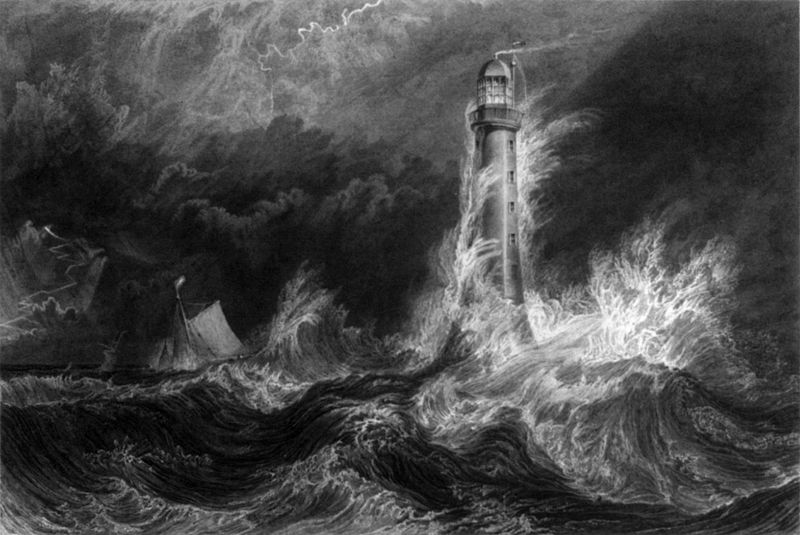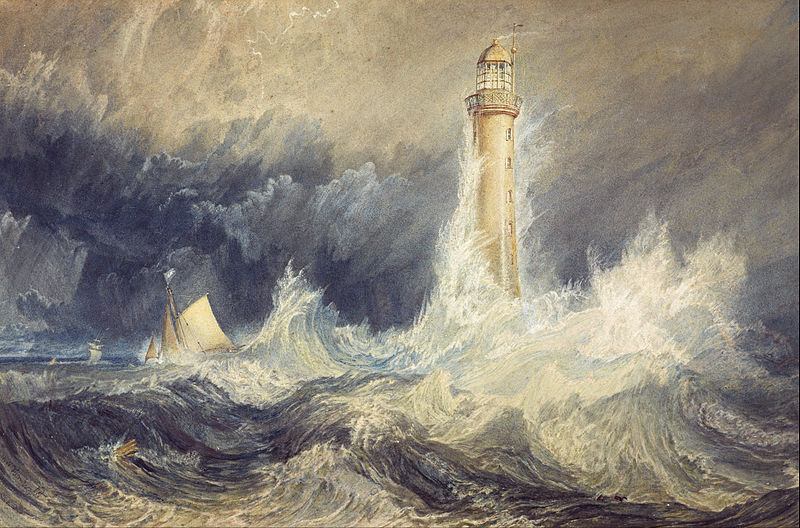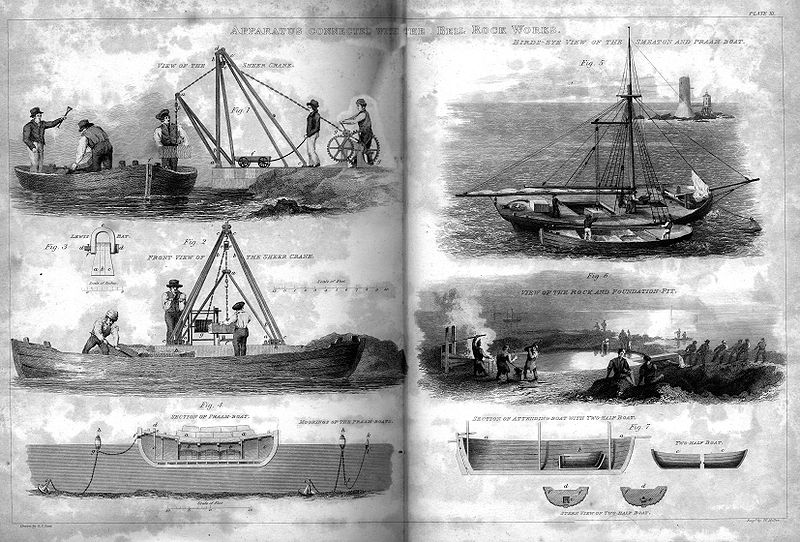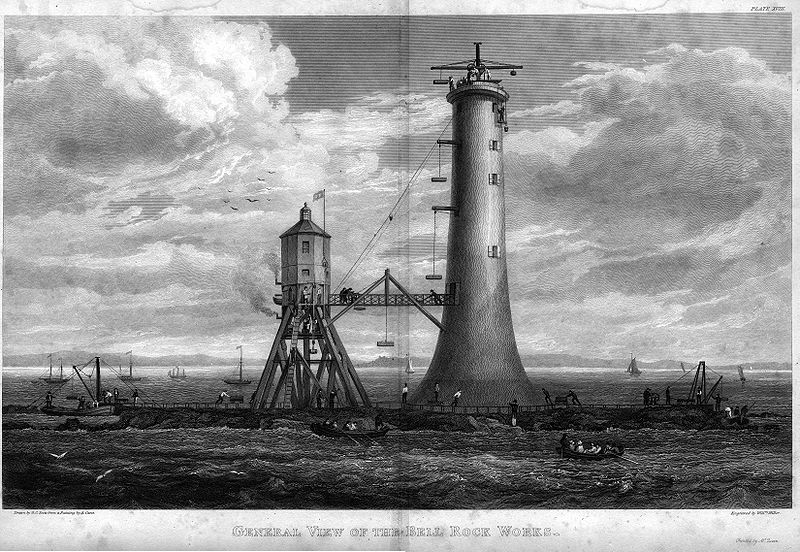Civil engineer Robert Stevenson designed the lighthouse of Bell Rock in the North Sea off the coast of Scotland. Completed in 1810, it is one of the oldest sea-washed lighthouses in the world. The difficultly of construction makes this one of the most famous buildings of modern time.
Poet Robert Southey wrote about the “Inchcape Rock,” which lay 12 feet below the surface of the sea. The reef wrecked many ships on their way to the estuaries of the Tay and Forth. After failed efforts to install a warning bell, and after many devastating shipwrecks, Scotland’s legislature approved a contract for a lighthouse. Many people did not see how such a feat would be possible, given the treacherous waters and difficult access.
The rock was only above water a few hours at a time during low tide, so the men had to work very quickly. Construction workers lived on a boat for immediate access, and later built a barracks house on the site. A blacksmith on site sharped pickaxes for foundation excavation, as explosives would potentially be too damaging. Stevenson frequently sought advice for detailing from his consultant John Rennie. Using innovative construction machines, the stone masons placed 2500 granite stones in interlocking circular patterns. Sir Leslie described the edifice in 1909:
“The tower, which, as in all Stevenson’s lighthouses, is free from architectural adornment, rises to the height of 100 ft; the diameter at the base is 42 ft, diminishing to 15 ft at the top. Above the solid, which is 30 ft in ehight, is the entrance doorway, the interior being divided into six stories.
Smeaton in his Eddystone tower adopted an arched form of floor, rendering it necessary to insert chains embedded in the masonry to counteract the outward thrust; but in the Bell Rock tower, by an ingenious arrangement of the masonry, the stone floors were converted into effective ‘bonds,’ thus tying the walls together, for as the stone floors form part of the walls, outward thrust is prevented. All subsequent rock towers have this form of floor.
The cubic contents of the tower are more than double those of the Eddystone, from which it differs in many respects owing to its far more difficult and dangerous site. The tower was protected both externally and internally from lightning stroke, and thirty-five years afterwards, on the advice of Faraday, a somewhat similar arrangement was applied to the Eddystone tower.
The optical apparatus consisted of parabolic reflectors of silvered copper, combined with argand burners, arranged on a four-sided frame, the best and most complete apparatus then known; and as a mean of further distinguishing the light, it was made to show red and white alternately…
Not only was the tower itself novel in design, but the implements used in its erection had to be invented. The balance and movable jib cranes were for the first time used at the Bell Rock. The latter is now in universal use. Ball-bearings were all introduced into the cranes at the Bell Rock for the first time. Stevenson further designed for the temporary lightship moored off the Bell Rock tower during its construction–the first lightship placed in so deep water–a lantern to surround the mast, instead of small lanterns hung from the yard-arms or frames. This improvement is now universally adopted.”
The lighthouse has weathered many brutal Scottish storms over the last 200 years, and it still stands firm. This existentially gives inspiration to man, and gives testament to architecture’s permanence in the face of ever-changing nature. It certainly will not last until the end of time, but the supreme fitness of construction gives testament to man’s ability to achieve safety, commerce, and society.

(Jlynott– flickr/creative commons license)

(Jlynott– flickr/creative commons license)
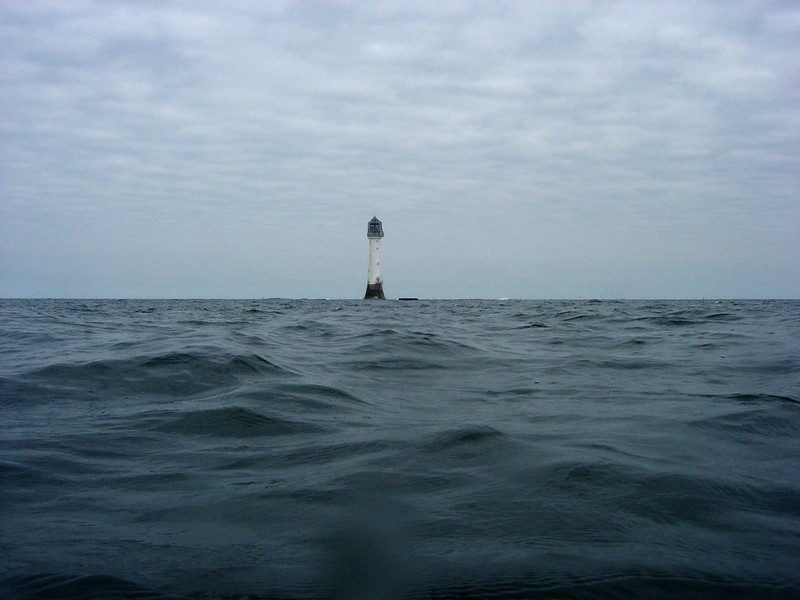
(gordon.milligan– flickr/creative commons license)
